MARKETING
How to Write a Press Release [Free Press Release Template + Examples]
![How to Write a Press Release [Free Press Release Template + Examples] How to Write a Press Release [Free Press Release Template + Examples]](https://articles.entireweb.com/wp-content/uploads/2022/02/How-to-Write-a-Press-Release-Free-Press-Release-Template.jpgkeepProtocol.jpeg)
In today’s world, brands have to generate their own buzz. Consumers aren’t waiting for the daily newspaper anymore to get their news. Instead, they’re scanning headlines on Twitter, Facebook, and other social media platforms.
One way to control the narrative surrounding your brand is through press releases. Whether it’s sharing a new product release or changes in your organizational structure, a regular cadence of meaningful news can help a company stand out and build mindshare with journalists over time.
In this post, we’ll discuss:
What is a press release/news release?
A press release is an official statement (written or recorded) that an organization issues to the news media and beyond. Whether we call it a “press release,” a “press statement,” a “news release,” or a “media release,” we’re always talking about the same basic thing.
While the heading should contain action verbs, the first paragraph should answer the “who,” “what,” “why,” and “where.” The press release should also contain understandable language and a quote.
Most press releases are succinct at just a page long – two pages tops. Ultimately, companies want to provide enough information so that news outlets have sufficient material for publishing their own stories about whatever the company is announcing in the release.
One thing to remember is that press releases live in the public domain, which means your stakeholders and customers can see them.
So, instead of thinking of a press release solely as a ticket to earning news coverage, consider it as a valuable piece of marketing content.
While there’s no cut-and-dried formula for what a press release should include, here are a few types of occasions to help you carve out a focus for your press release and determine what content would help you broadcast your news in the best way:
Types of Press Releases
- New Product Launches
- Mergers and Acquisitions
- Product Updates
- Events
- Grand Openings
- New Partnerships
- Rebranding
- Executive Promotions/Hiring
- Awards
Product Launches
The product launch type of press release is valuable to get the word out about the new solutions your organization is offering to consumers.
It should emphasize the product’s specs, pricing, availability, and any other details that may be valuable to consumers.
Mergers and Acquisitions
Organizational change is noteworthy enough to warrant a press release, especially for informing current and future stakeholders about the growth and trajectory of a company.
To announce an acquisition or merger, include details about all organizations involved, information about the merger or acquisition, and quotes from the leadership teams.
Product Updates
Similar to a new product launch, product updates and expansions are also ripe for promotion. Explain what the change is, why it was made, and how it benefits the user.
Events
Press releases are an important component of event marketing to attract promotion from news outlets and other media sources.
You’ll want to include:
- What the event is about
- Who should consider attending
- When and where it will be held
- Pricing
Grand Openings
Whether you opened up a new office, relocated, or are opening for the first time, announce the details with a grand opening press release.
Announce the date and location the grand opening will be held, who is involved, how the grand opening is being celebrated, and the reason for the move (if applicable).
New Partnerships
Similar to mergers and acquisitions, a press release announcing new partnerships is a mutually beneficial marketing tactic.
To effectively execute this type of release, be sure to write a summary about each company, why the partnership was created, who benefits, and any additional important details for current and future stakeholders.
Rebranding
Rebranding is a difficult thing for any business to do, and it can occasionally result in confusion and awkwardness.
One way to make the transition smoother is by announcing the rebrand with a press release, including details on what is changing, the reason for making the change, dates the changes go into effect, and quotes from the leadership team.
Executive Team Changes
Executives often serve as faces of the company, and a press release functions to kick off this role.
It may include biographical information to establish their credibility along with a photo and other pertinent details.
Awards
When it comes to business excellence, it’s OK to brag. Press releases about awards and accomplishments serve to cement your organization as an authority in your space.
Such a press release includes information about the company and why they were given the award, information about the award itself, and details about the ceremony (if applicable).
Press Release Format
- Contact information and ‘For Immediate Release’ at the top.
- Title and italicized subheading to summarize the news.
- News location and news peg in opening line.
- Two to three paragraphs to add context and additional details.
- Bulleted facts and/or figures.
- Company description at the bottom.
- Three pound symbols (###) at the end to signify the end of the release.
When formatting a press release, you want to write it in a newsy, straightforward way so a journalist who might write about it can imagine it as an article on their news site.
To start, here are the basics every press release should include:
- Your contact information located on the top left corner
- The phrase “For immediate release” located on the top right
- A headline that quickly explains the announcement
- Your business location in the first sentence of the press release
- A quick bio about your company at the end of your press release.
You also might want to include “###” or another signifier to show the journalist that the release has ended. In the past, this prevented busy journalists from waiting or flipping the page for more information when there was no more news. However, this tradition is still adopted and highly-respected today.
Now, onto the body of your press release:
- Your first paragraph should state what the announcement while providing some context around your business and what it does.
- The next two to three paragraphs should include quotes from a company spokesperson or business executive to explain the “why” behind this announcement.
- Your last paragraph should be an “About Us” section that explains what your company is and what it offers.
In this example, Catbrella Inc., a fictitious ad agency that just gained its 10th Twitter follower after two years of paid social media efforts, announces its achievement in a press release.

*Disclaimer: HubSpot is entirely responsible for the silliness of this faux announcement.
Writing a press release to break important company news can help businesses grow better, but doing it right is just as important. Here’s how to write a press release, like the one above, step-by-step.
1. Write a compelling headline.
You’ve got your announcement in mind, and now it’s time to get it down in words to share with your community, industry, and followers.
Just like writing the perfect blog post title, setting up your press release for success starts with your headline. You only have one line to work with, which can seem scary, but consider your words carefully to make your headline captivating.
Here are some tips to make your headline stand out:
- Use action verbs.
- Be specific.
- Keep it short.
Most importantly, make it interesting: Keep in mind that reporters get dozens, if not hundreds, of releases each day, so invest the time to write a compelling headline.
Consumers, on the other hand, see news stories all over their timelines. As such, your headline needs to be interesting enough to reel them in.
2. Convey the news value to the press.
If you want your press release to be newsworthy, you have to give readers a reason to care.
A good way to ensure this is by using the reverse pyramid formula when writing your press release: Going from the most important information to the least important.
While the first paragraph of your release should explain the who, what, where, the second paragraph should cover the why.
Reporters don’t have a ton of time to sift through details and fluffy background information — they just need the facts that’ll help them tell your story to someone else from a position of authority.
There shouldn’t be any new, crucial information covered after these sections because the readers could potentially miss them.
3. Offer a tempting quote.
Once you’ve set the scene, it’s time to bring your details to life with a quote that reporters can use for context around your announcement and help paint a picture of how your news affects the given industry, customer base, and landscape.
Ideally, quotes will be from key stakeholders in your company including your executive team, project leads, or those directly impacted by your announcement.
Quoting key figures and authorities underlines the importance of your development. The chosen quote should shape your narrative and emphasize the core of the announcement.
Don’t ask everyone in your office for a comment or feel compelled to quote all 25 people included in the acquisition. Pick one or two critical spokespeople and focus the quotes around their unique perspective.
4. Provide valuable background information on the subject.
In this last paragraph, keep in mind that the reader should already have key details they need regarding your announcement.
Offer details here that strengthen your narrative, like creative or noteworthy ways your company developed the project or announcement at hand. Or, when applicable, comment on the future implications of your announcement.
Another good way to add value to your press release is by using newsjacking. A process of relating your press release to something currently going on to make it more valuable to the journalist and reader.
5. Summarize the “who” and the “what” in a boilerplate.
Twitter is chock-full of reporters lamenting press releases or pitches that don’t clearly explain what the company does or what the announcement is actually about.
Describe what your company does in clear, plain language and include a link to your company’s website early on.
If you cite data, include a reference link for the data source, and make sure every name in the release has an associated title and company as well.
To keep yourself honest on this front, ask a colleague to read the release without context and ask them to relay the information back to you. If they can’t recall the who, what, or why get back to the drawing board.
Press Release Template
This template includes press release templates based on the type of announcement your company wants to make, whether it’s a new product, a partnership, or a change within your organization.
Download This Press Release Template for Free
This template also offers creative replacements for the traditional press release and a guide on how to create a comprehensive promotional plan. You’ll have exactly what you need to drive brand awareness and stand out among your competitors.
Press Release Examples
Many people think press releases have to be chock full of buzzwords and branded terms.
“Big data,” anyone? Five-syllable words you have to look up on Thesaurus.com? Quotes from every executive on the planet that go on for pages? We’ve seen it all. Unfortunately, so have reporters – and they are not fans.
Instead of stuffing your next release with industry jargon, take a page out of our book (OK fine, ebook), The Newsworthy Guide to Inbound Public Relations, and brainstorm some creative approaches for your next announcement.
Can you include new data? A remarkable graphic or video? A shareable SlideShare? If so, a creative angle can help carry your content and increase the likelihood of social sharing.
Now, to get you thinking on the right track, take a look at some creative press release examples below, the type of news each one is reporting on, and what makes the release unique:
1. Microsoft
Type of press release: Acquisition
![How to Write a Press Release [Free Press Release Template + Examples] snapshot of press release example from microsoft](https://articles.entireweb.com/wp-content/uploads/2022/02/How-to-Write-a-Press-Release-Free-Press-Release-Template.jpeg)
The first thing that stands out in this press release is the headline. It tells a full story without being too long: It covers who’s involved (Microsoft and Activision), what’s happening (an acquisition), and why it matters (to bring the joy and community of gaming to everyone).
Throughout the press release, you get quotes from leaders in both organizations, helping explain the benefit of this acquisition and how it will move the industry forward.
Toward the bottom of the press release, you get additional context surrounding each company’s market share and how this acquisition will impact the industry.
2. Flourish
Type of press release: Team and office expansion
![How to Write a Press Release [Free Press Release Template + Examples] snapshot of press release example from flourish](https://articles.entireweb.com/wp-content/uploads/2022/02/1645790658_394_How-to-Write-a-Press-Release-Free-Press-Release-Template.jpeg)
Organizational changes can seem relatively boring. One way to generate some interest is to include visual elements to add more dimension to the story.
In this press release announcing a team and office expansion, venture capital firm Flourish shares photos of some new hires right at the top, immediately drawing readers in.
The release dives into the reason behind the expansion and the key areas of focus moving forward. Then, we get a quick bio for each hire featured in the image, which can help build excitement surrounding the brand’s future.
The key takeaway here is: Don’t be afraid to use visual elements in your press release, as they can help draw readers in.
3. SuperCom
Type of press release: Event
![How to Write a Press Release [Free Press Release Template + Examples] snapshot of press release example from supercom](https://articles.entireweb.com/wp-content/uploads/2022/02/1645790659_338_How-to-Write-a-Press-Release-Free-Press-Release-Template.jpeg)
As the shortest press release in the bunch, SuperCom shows that less is often more.
In this release, security solutions company SuperCom announced its participation in an upcoming conference.
When it comes to events, the most important details are date and location. As long as you have those key pieces, everything else is a bonus.
One thing that would’ve elevated this release is a quote on who can benefit from attending this event and why, as a way to reel in potential attendees.
4. HubSpot
Type of press release: Program launch
![How to Write a Press Release [Free Press Release Template + Examples] snapshot of press release example from hubspot](https://articles.entireweb.com/wp-content/uploads/2022/02/1645790659_623_How-to-Write-a-Press-Release-Free-Press-Release-Template.jpeg)
We’ve also crafted this comprehensive, easy-to-follow press release template complete with a promotional plan and considerations for your next announcement. We use these same guidelines when writing and formatting our releases here at HubSpot, and created a faux, sample release to illustrate what content goes where and why.
Tips for Publishing Press Releases
Writing a press release is really only half the battle. Once you’re finished with production, it’ll be time to focus on distribution.
Of course, we’re all familiar with the traditional distribution levers we can pull, which include publishing the press release on our website/blog as well as sharing the press release with our followers/subscribers via social media and email.
To get the maximum amount of distribution possible, here are some tips you can follow.
1. Reach out to specific journalists.
Instead of blasting a press release out to every journalist you can find an email address for, focus on a few journalists who have experience covering your industry (and company, hopefully) and send them personalized messages.
Connect the dots. Show why what you wrote connects to what they write.
2. Send the release to top journalists the day before.
Give journalists some time to craft a story around your press release by sending it to them — under embargo — the day before it officially goes live.
“Under embargo” just means they aren’t allowed to share the information in the press release until the time you specify.
3. To avoid competition, don’t publish your release on the hour.
If you’re publishing your press release on a distribution service like PR Newswire or Business Wire, avoid publishing it on the hour (e.g., 1 p.m., or 3 p.m., or 5 p.m.).
The reason? Most companies schedule their releases to go out on the hour, which means if your release goes out on the hour too, it’s more likely to get lost in the shuffle.
Instead, try going with a more distinct time (e.g., 1:12 p.m., or 3:18 p.m., or 5:22 p.m.).
4. Share your media coverage.
If all goes according to plan, and your press release gets picked up by the media, your job still isn’t finished.
To keep the buzz going, you can release a “second wave” of distribution by sharing the specific stories that news outlets write based on your press release.
You can also share the news on your digital channels, like social media and email, to bring awareness to your announcement.
How To Stand Out In The News
The key to keeping your PR strategy new school is forgetting preconceived notions of what public relations is and instead focusing on creating highly remarkable content. Traditional press releases can still be really valuable when executed well.
Instead of ditching releases as a tactic, give them a modern makeover to make them more useful for your marketing.
Think about how you’ve used inbound methods to transform your marketing strategies to be more personalized, approachable, and build relationships. Those same principles apply to your PR strategy: Create content to craft your own story and use tactful outreach to get the media familiar with (and excited about) your brand.
Editor’s note: This post was originally published in November 2019 and has been updated for comprehensiveness.
Source link

![How to Write a Press Release [Free Press Release Template + Examples] press release template offer from hubspot](https://articles.entireweb.com/wp-content/uploads/2022/02/1645790658_405_How-to-Write-a-Press-Release-Free-Press-Release-Template.png)
![How to Write a Press Release [Free Press Release Template + Examples] New Call-to-action](https://articles.entireweb.com/wp-content/uploads/2022/02/1644496749_254_The-Who-What-Why-How-of-Digital-Marketing.png)
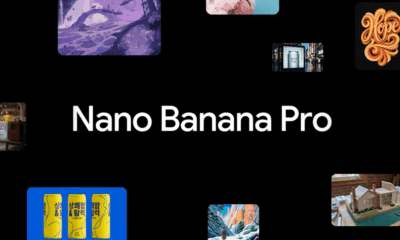





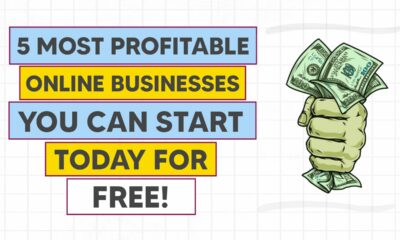

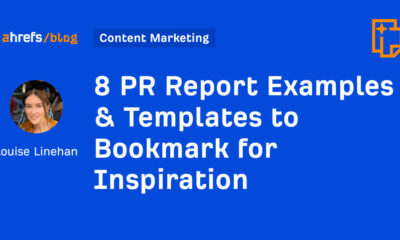



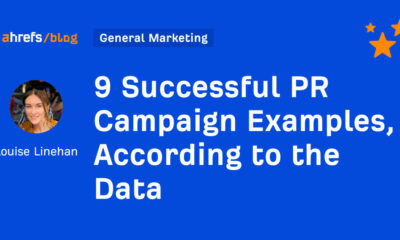



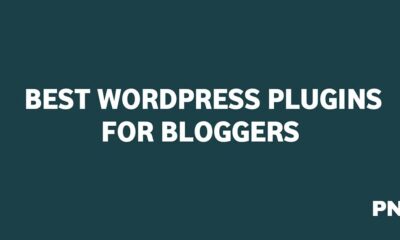

You must be logged in to post a comment Login